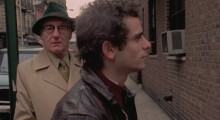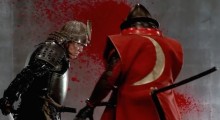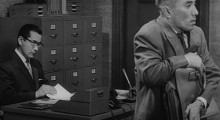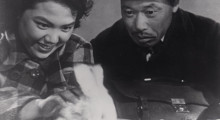Akira Kurosawa
-
One-Eyed Jacks and Dreams: Jim Hemphill’s Home Video Picks for Friday, December 2, 2016

One of the major film restoration events of 2016 was Universal’s digital overhaul of Marlon Brando’s One-Eyed Jacks (1961), an important bridge between the classical Westerns of John Ford and the genre-busting revisionism of Sam Peckinpah and Sergio Leone, not to mention Arthur Penn, who would work with Brando on another great iconoclastic Western, The Missouri Breaks, around 15 years later. Like The Missouri Breaks, One-Eyed Jacks is an unruly passion project filled with idiosyncratic touches and auteurist preoccupations. Yet since Brando never directed another movie before or after, the motifs connect not to his other work behind the camera […]
by Jim Hemphill on Dec 2, 2016 -
Structuring Uncle Howard in Production and Post using William Burroughs’s The Western Lands and Akira Kurosawa’s Ikiru

One of the earliest challenges in making Uncle Howard was figuring out how to tell a story around a main character who is essentially absent. My uncle, Howard Brookner, was a fairly obscure director, whose work went missing to varying degrees, and who had died some 25 years ago. Yet, to me and others around him, he left a very strong memory and spirit. How to show this? For inspiration, my producer, Paula Vaccaro, and I turned to Howard’s friend and former film subject, William S. Burroughs (Burroughs: The Movie, 1983), whose book, The Western Lands, was the last he wrote before dedicating himself […]
by Aaron Brookner on Jan 26, 2016 -
Why Kurosawa Was a Master of Movement

Here’s another masterful film essay by Tony Zhou, this time on Akira Kurosawa’s use of movement in his films. Movement, you ask? Aren’t movies motion pictures and, thus, constructed around movement? Well, as a comparison scene from The Avengers shows, there is movement in the form of listless dolly moves and diffident head tilts, and then there is movement — elegant, multi-point master shots, vibrant background elements like wind and rain, and outsized expressions from actors that can replace pedantic dialogue. I especially like Zhou’s discussion of how Kurosawa cuts from stillness to movement. His appreciation here of Kurosawa has […]
by Scott Macaulay on Mar 22, 2015 -
Watch: Kurosawa and The Geometry of a Scene

In his latest “Every Frame a Painting” series, Tony Zhou takes generic, ensemble coverage to task. Pitting rigid Hollywood biopic fare against the geometric blocking of Akira Kurosawa’s The Bad Sleep Well, Zhou considers why dynamism comes through movement and not necessarily edits. As the characters shift about the room, tracing lines of triangles and squares, Kurosawa uses full-bodied actors — not close-ups — to draw your attention to a given object.
by Sarah Salovaara on Jan 30, 2015 -
The Watergate Theory of Screenwriting

At the 2013 Screenwriting Research Network International Conference, Larry Gross discusses narrative, knowledge and Kurosawa’s Ikiru. I want to begin by expressing my sense of unworthiness at being offered the chance to give this keynote address, given the stature of some of those who proceeded me in performing the task, and I want to express briefly my personal admiration for three of these predecessors. Here in Madison, Wisconsin, I don’t have to explain the importance of David Bordwell as one of the world’s greatest film scholars. I only want to mention that I first became aware of his work in […]
by Larry Gross on Oct 21, 2013
